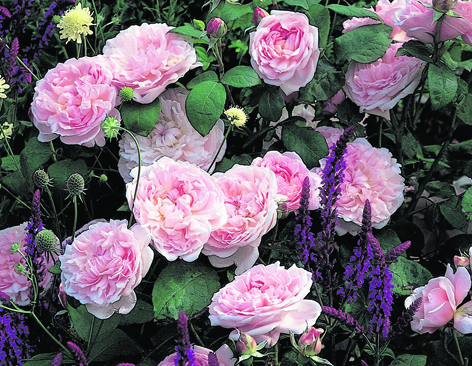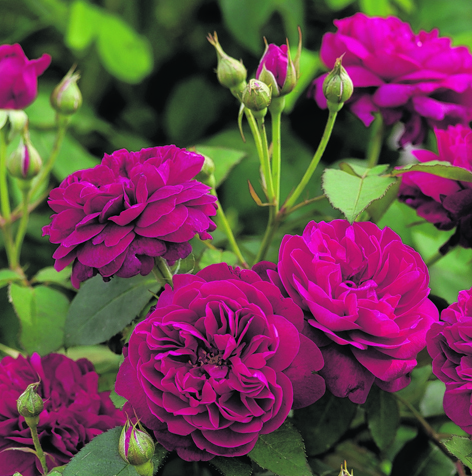Roses are still the number-one flower to give your loved one for Valentine’s Day, but you can extend their glory in your own garden throughout the summer
I don’t want to put a dampener on romance, but I really begrudge my husband paying a fortune for roses on Valentine’s Day when the same money could have gone on a living rose that I can plant in my garden and enjoy for years to come.
Indeed, roses may not be in bloom naturally in February, but they will provide you with plenty of colour and scent in the summer months if you give them a little TLC and plant them where they’re happy.
It’s also now a perfect time to order bare-root roses to plant during the dormant season so they can get a head-start for summer.
There are so many types of roses but if you want to plant them among other specimens in beds and borders, then English Roses by David Austin are probably your best bet, they are repeat-flowering, reliable and often disease resistant (although always check on the label or ask someone if you’re not sure).
Many are good for cutting, although I can’t bear to cut my own roses. I would much rather they flourish in the garden, outside for all to see.
Good red roses are difficult to breed. The challenge is to get a good combination of both fragrance and health, and dark red roses in particular are subject to burning in the sun. But if you have your heart set on one, look out for Darcey Bussell, a compact, bushy variety which flowers all summer, producing clusters of rosette-shaped flowers of deep crimson and a fruity scent. It’s ideal for a smaller garden, a narrow border or even a large pot.
I always find red quite a hard colour to match, preferring the pinks and pastel shades of other English roses including the fragrant Gertrude Jekyll, which I grow up an obelisk in my mixed border with Clematis Nelly Moser, a beautiful pink and white striped hybrid. Together, they provide a stunning display in June and beyond.
Roses are hungry feeders, so make sure you add plenty of organic matter such as well-rotted manure or compost to the soil before planting, digging a hole much bigger than the roots so that they can easily spread out and make sure the surrounding soil is cultivated, not compacted, or the roots won’t spread.
 When planted, the base of the stems should be about 3in (7.5cm) below ground level.
When planted, the base of the stems should be about 3in (7.5cm) below ground level.
Newly planted roses will also need to be kept well watered when they are trying to establish. Add rose fertiliser in March or April, at the start of the growing season, and again in June to repeat-flowering varieties and mulch them with compost in spring.
All roses need four or five hours of sunshine a day to thrive during the growing season, although some can take more shade than others. Avoid areas where there are overhanging branches and dry places where there would be too much competition from the roots of other trees and shrubs.
Climbing roses such as Tess of the D’Urbervilles Climbing should do well on an open north-facing wall.
Shorter companion plants can be used around them, allowing the roses to display their beauty to the full.
Avoid using invasive perennials or shrubs which might overpower the roses. Instead, go for light, airy perennials such as lady’s mantle (Alchemilla mollis), whose soft rounded leaves and lime-green flowers make a colourful base to your rose bushes and don’t take away the glory of the rose flowers.
Pale pink varieties like Eglantine can be easily partnered with deep-purple perennial salvias or perennial geraniums such as Johnson’s Blue. Copper-coloured specimens such as Pat Austin make a good match for soft blue nepeta underneath.
The taller English Roses will add height and structure to the mixed border without the need for staking, while the more compact varieties are perfect for the front of the border.
It is particularly important to plant roses in small groups in the border, as this will create the most pleasing effect.
If you need to fill in space, good annuals which will combine well with roses include love-in-a-mist such as Nigella Miss Jekyll or the feathery Cosmos bipinnatus, with its large single flowers in white, pink and purple.
And then, of course, we come to pruning – but that’s a story for another day.
